The landscape of K-12 education is evolving faster than ever, driven by innovative technologies and the changing needs of schools, teachers, staff and students.
As we look ahead to 2025, several EdTech trends are poised to transform the way students learn, educators teach, and schools operate. Here are some key EdTech trends to watch in 2025 and how they will impact K-12 education.
Artificial Intelligence (AI) in the Classroom
AI is becoming a game-changer in education, and its influence will only grow in 2025. Schools will increasingly use AI to personalize learning paths, automate grading, and provide real-time feedback. AI-powered tools can analyze student performance to identify areas for improvement, allowing educators to focus on individual student needs.
- AI Tutors: Intelligent tutoring systems will provide 24/7 support to students, offering explanations, exercises, and feedback tailored to their learning style.
- Teacher Assistants: AI will help teachers with time-consuming tasks like lesson planning, grading assignments, and analyzing student progress.
Immersive Learning with Virtual Reality (VR) and Augmented Reality (AR)
Virtual and augmented reality technologies are making their way into K-12 classrooms, creating immersive learning experiences that captivate students. In 2025, VR and AR will help students explore complex concepts, visit historical landmarks, or engage with scientific simulations—all from their classroom.
- Virtual Field Trips: Students can visit the Great Wall of China, explore the ocean’s depths, or experience life in space without leaving their desks.
- Hands-On Learning: AR tools will overlay digital information onto real-world objects, allowing students to interact with content in engaging ways.
Smart Communication Systems for Schools
Communication is at the heart of a successful school community. By 2025, smart communication tools will continue to bridge the gap between parents, teachers, and administrators. Platforms like BrightArrow will play a vital role in ensuring seamless and efficient communication.
- Automated Messaging: Schools will leverage platforms that send timely updates, reminders, and emergency alerts to parents and staff.
- Integrated Platforms: Tools that combine communication, student data, and classroom management will streamline school operations and save time for educators.
- Two-Way Communication Apps: In 2025, communication apps with two-way communication will revolutionize how schools engage with parents, students, and staff by creating a seamless, real-time feedback loop.
Gamification and Edutainment
Gamification—the use of game-like elements in education—will remain a major trend as schools seek to increase student engagement and motivation. Educational games and interactive platforms will combine learning and entertainment to make lessons more enjoyable and effective.
- Learning through Play: Gamified platforms will turn math problems, vocabulary lessons, and science experiments into engaging challenges and quests.
- Student Rewards: Teachers will use digital rewards, leaderboards, and points systems to encourage student participation and achievement.
Data-Driven Decision Making
Data analytics will empower schools to make more informed decisions regarding student performance, resource allocation, and curriculum design. In 2025, schools will adopt advanced data systems to collect, analyze, and use insights to improve outcomes.
- Predictive Analytics: Schools will use data to identify at-risk students early and implement intervention strategies.
- Performance Tracking: Dashboards will provide real-time insights into attendance, grades, and behavior trends.
The Rise of Hybrid Learning Models
Hybrid learning—a mix of in-person and remote education—is here to stay. In 2025, schools will refine their hybrid learning strategies to ensure flexibility while maintaining student engagement and academic rigor.
- Flexible Scheduling: Schools will offer hybrid options to accommodate diverse student needs and schedules.
- Collaborative Tools: Platforms that enable real-time collaboration, both online and offline, will become integral to learning.
Preparing Students for the Future Workforce
As technology continues to shape the future of work, schools will focus on equipping students with essential skills for tomorrow’s jobs. Coding, digital literacy, critical thinking, and problem-solving will be key priorities.
- STEM and STEAM Programs: Schools will emphasize science, technology, engineering, arts, and math to prepare students for tech-driven careers.
- Work-Based Learning: Partnerships with businesses will offer students opportunities for internships and hands-on career training.
Final Thoughts
These predictive EdTech trends of 2025 promise to bring innovation, equity, and engagement to K-12 education. By embracing these emerging technologies, schools can create enriched learning experiences, support teachers, and prepare students for the challenges of tomorrow.
With tools like BrightArrow and apps such as ParentHub, schools are not just sending messages—they’re starting conversations that keep everyone connected and engaged.
The future of education is bright—and it’s just around the corner.
Reach out to learn more about BrightArrow’s Communication Platform here: Sales@BrightArrow.com.



